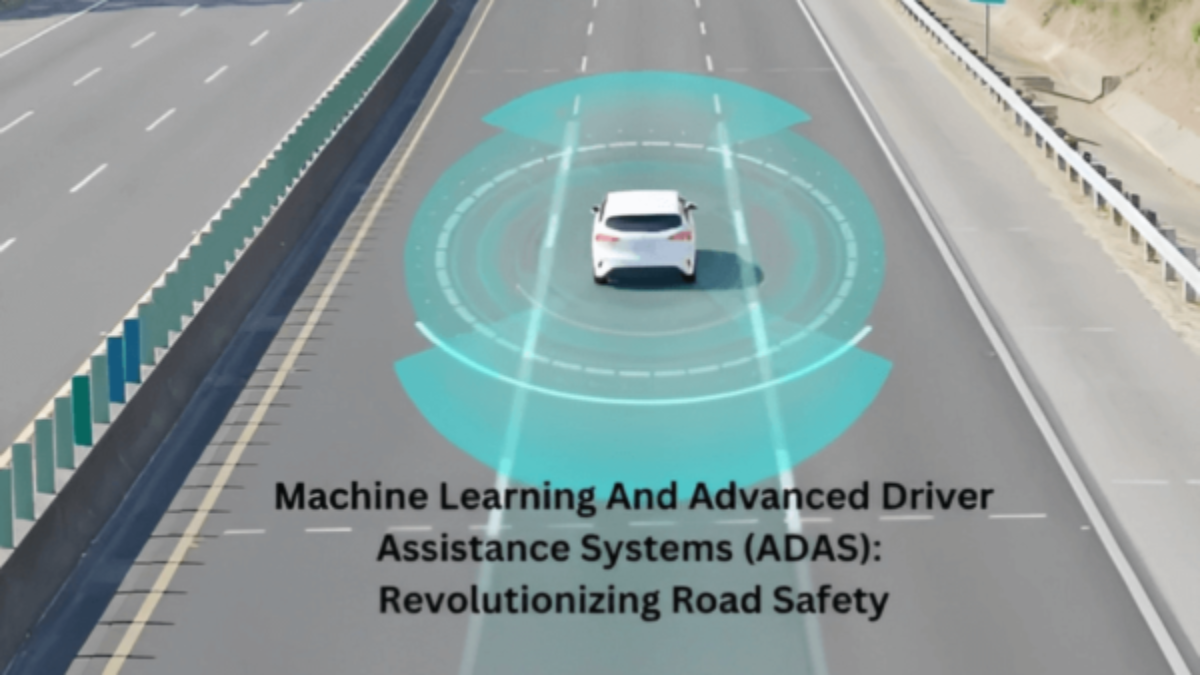Introduction
Due to the incorporation of cutting-edge technologies, the automotive sector is undergoing a significant transition. Machine Learning (ML) in conjunction with Advanced Driver Assistance Systems (ADAS) is one such technology that is transforming traffic safety and reshaping the future of transportation.
This article examines the mutually beneficial relationship between ML and ADAS, highlighting their contribution to enhancing traffic safety, lowering accident rates, and laying the groundwork for autonomous vehicles.
1. Understanding Machine Learning (ML)
Artificial intelligence (AI) is a subset that allows computers to learn from data and patterns without having to be explicitly programmed. Large datasets can be identified and relevant insights extracted by computers using ML algorithms. These insights can then be used to inform forecasts and decisions.
ML is used in a number of sectors, such as finance, healthcare, and e-commerce, but its impact on the automotive industry, particularly in ADAS, has been revolutionary.
2. Advanced Driver Assistance Systems (ADAS)
The term “ADAS” refers to a group of sophisticated tools and systems created to support drivers’ judgment and improve overall traffic safety. In order to sense the environment and give the driver real-time input or even operate autonomously in some circumstances, these systems largely make use of sensors, cameras, radars, and other data sources.
ADAS features could include
- Adaptive Cruise Control (ACC): this automatically modifies the vehicle’s speed to maintain a safe following distance from the vehicle in front of it.
- Lane Departure Warning (LDW): Warns the driver if the car leaves its lane without turning on its turn signal.
- Automatic Emergency Braking (AEB): In order to avoid or lessen crashes with other cars or pedestrians, automatic emergency braking (AEB) automatically applies the brakes.
- Blind Spot Monitoring (BSM): This system alerts the driver when there are objects in the blind spots of the car.
- Parking Assistance: Makes safe parking easier by using cameras and sensors.
3. Machine Learning’s Benefits for ADAS
By empowering the systems to learn from data, adapt to novel situations, and make wise decisions, machine learning plays a crucial role in boosting the capabilities of ADAS. Here is how ML enhances ADAS capabilities:
- Object Recognition and Tracking: In order to recognize and track objects in real-time, such as moving vehicles, pedestrians, and obstacles, ML algorithms examine sensor data. Using this data, ADAS systems can decide intelligently whether to brake, steer, and perform other safety procedures.
- Anomaly Detection: ML models may identify strange or unexpected driving patterns, such as abrupt lane changes. These anomalies may indicate impending dangers, and ADAS can take appropriate action to prevent accidents.
- Predictive Analytics: ML algorithms forecast potential risks and dangers by using past data. ADAS can actively help the driver and reduce accidents by foreseeing potential dangers.
- Adaptive Control: ML enables ADAS systems to modify their settings in response to the behavior of the driver, traffic patterns, and environmental variables. This flexibility enables a more individualized driving experience and improves the system’s effectiveness.
- Decision Making: ML algorithms allow ADAS to swiftly evaluate complicated data and make decisions based on a variety of variables including traffic density, weather, and road conditions.
4. Practical Uses for ML-Enabled ADAS
- Lane-Keeping Assistance: Using cameras and machine learning algorithms, ADAS may identify lane lines and provide the car with modest steering instructions to keep it centered in its lane.
- Traffic Sign Recognition: ML assists ADAS in identifying and interpreting traffic signs, such as speed limits, stop signs and no-entry signs, and alerting the driver when necessary via visual or audio cues.
- Autonomous Emergency Braking (AEB): When a driver ignores a warning, ML algorithms assess sensor data to determine potential accident risks and automatically apply the brakes.
- Adaptive Headlights: ML-enabled ADAS can modify the angle of the headlights in accordance with the curvature of the road and the volume of traffic, enhancing visibility while lessening glare for other drivers.
- Driver Monitoring: ML systems can keep an eye on the actions and attention levels of the driver, spot indicators of distraction or tiredness, and issue alerts or help prevent collisions.
5. Obstacles and Prospects for the Future
Despite the many advantages of ML-enabled ADAS, there are still a number of obstacles that must be overcome for widespread acceptance and continued development:
- Data Quantity and Quality: For ML models to learn efficiently, they need a lot of high-quality data. It might be a big job to gather and annotate a variety of representative driving data. Robustness and Safety: To manage a range of environmental variables and situations, ML models need to be reliable and robust. Gaining the public’s trust requires ensuring the ADAS’s safety and integrity above all else.
- Regulatory and Legal Issues: The combination of ML and ADAS creates a number of intricate regulatory and legal issues, including those pertaining to data privacy and liability in the event of accidents.
- Human-Machine Interaction: The difficulty lies in achieving smooth and natural interactions between drivers and machines as ADAS systems become increasingly autonomous.
The future of ML with ADAS is really promising. Even more powerful ADAS functions and a safer driving experience will result from the development of increasingly complex ML models and the growing accessibility of high-quality data. We should also expect future developments toward completely autonomous vehicles as ML models develop.
Conclusion
The automotive landscape is changing as a result of the unbreakable partnership between machine learning and advanced driver assistance systems. Driving becomes safer and more convenient as a result of ML-powered ADAS, which equips vehicles with improved perception, decision-making skills, and adaptive control.
Even though there are still difficulties, the constant pursuit of innovation and cooperation between scientists, businesses, and decision-makers will definitely get us one step closer to a time when roads are self-driving and accident-free. To make sure that ML-driven ADAS fulfills its potential as a game-changing force in the automobile industry, it is crucial that we put safety, ethics, and regulatory frameworks first as we adopt this technology.

